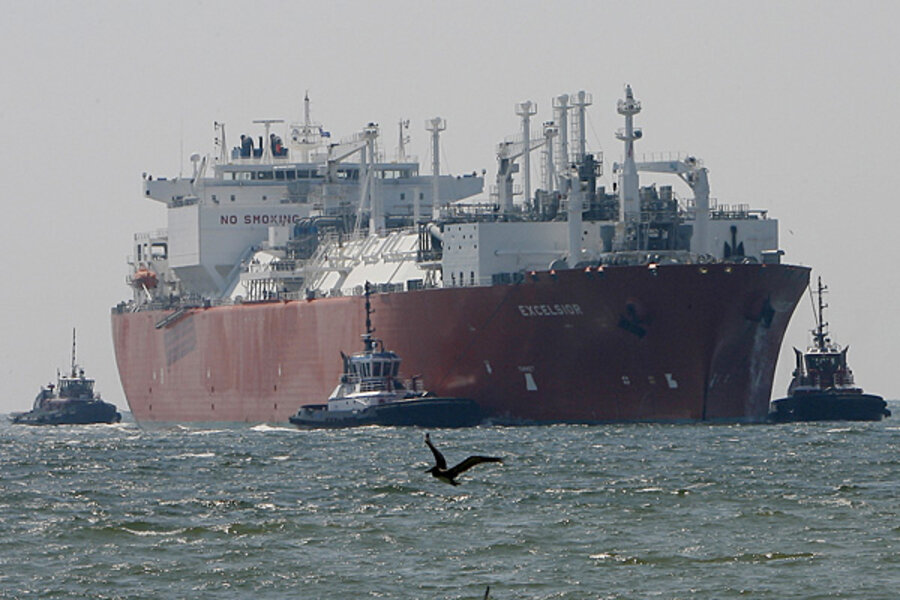US eases natural gas glut with second export terminal
Loading...
The US Department of Energy approved Friday the country's first liquified natural gas (LNG) export terminal since 2011.
It's a shift in policy that opens up America's newfound – and vast – natural gas resources to world markets. Advocates say they will improve the US trade balance and provide a boost for the natural gas industry, creating more jobs. The announcement is also a boost to key US allies, especially Japan, which has been lobbying the Obama administration to allow LNG exports as it transitions away from nuclear power.
But US consumers and manufacturers have benefited from the oversupply in the form of lower energy costs. Natural gas prices, which in March 2012 reached a 13-year low, will soar with the increase in foreign demand, critics warn. There are environmental concerns, as well. A global interest in US natural gas means an extended reliance on fossil fuels, delays a shift to clean-tech energy, and increases the use of potentially damaging drilling techniques, environmentalists say.
"It's a bad deal all around: for public health, the environment, and America's working people," Deb Nardone, director of the Sierra Club's Beyond Natural Gas campaign, said in a statement Friday. "LNG export is nothing but a giveaway to the dirty fuel industry, at the expense of everyday Americans."
The debate over natural gas exports has raged for months in Washington and across the country as policymakers and industry analysts weigh the pros and cons. Friday's announcement suggests that the Obama administration views it in the national interest to export at least some of the country's vast natural gas reserves. The question now is how quickly the administration will proceed in deciding other export applications.
In May 2011, Cheniere Energy Inc.'s Sabine Pass terminal in Louisiana became the first facility authorized to export natural gas, up to 2.2 billion cubic feet per day. Friday's authorization was for Freeport LNG, a $10 billion facility in Texas, for exports of up to 1.4 billion cubic feet per day.
The plant already had authorization to export to countries that have a free-trade agreement with the United States. The new authorization allows exports to nations without a free-trade agreement with the US, such as Japan. Two of Japan's largest utilities, Osaka Gas Co. and Chubu Electric Power Co., have 20-year contracts to buy LNG from Freeport in its first phase.
Nineteen similar applications await approval. The Department of Energy says in its release that it will process those applications on a case-by-case basis, assessing the market impact on proposed LNG plants "as further information becomes available at the end of 2013."
The natural gas industry would like the administration to move faster.
“While this is a positive step, we would like for the administration to pick up the pace of approvals so that the markets can decide which projects go forward," said Marty Durbin, president and chief executive for America’s Natural Gas Alliance, in a statement.
Hydraulic fracturing and horizontal drilling have unlocked previously unattainable oil and gas from a stubborn rock formation called shale. The US produced 7.8 trillion cubic feet of shale gas in 2011, up from 1 trillion cubic feet in 2006, according to the US Energy Information Administration. That's expected to rise by 114 percent to 16.7 trillion cubic feet in 2040.
The glut explains why energy companies are lining up to seek permission to export a liquid that, several years ago, most companies expected to import. But LNG plants are huge and risky investments, because they rely on low natural gas prices and high LNG prices. If US or world prices swing in a big way, the plants could quickly become unprofitable.








